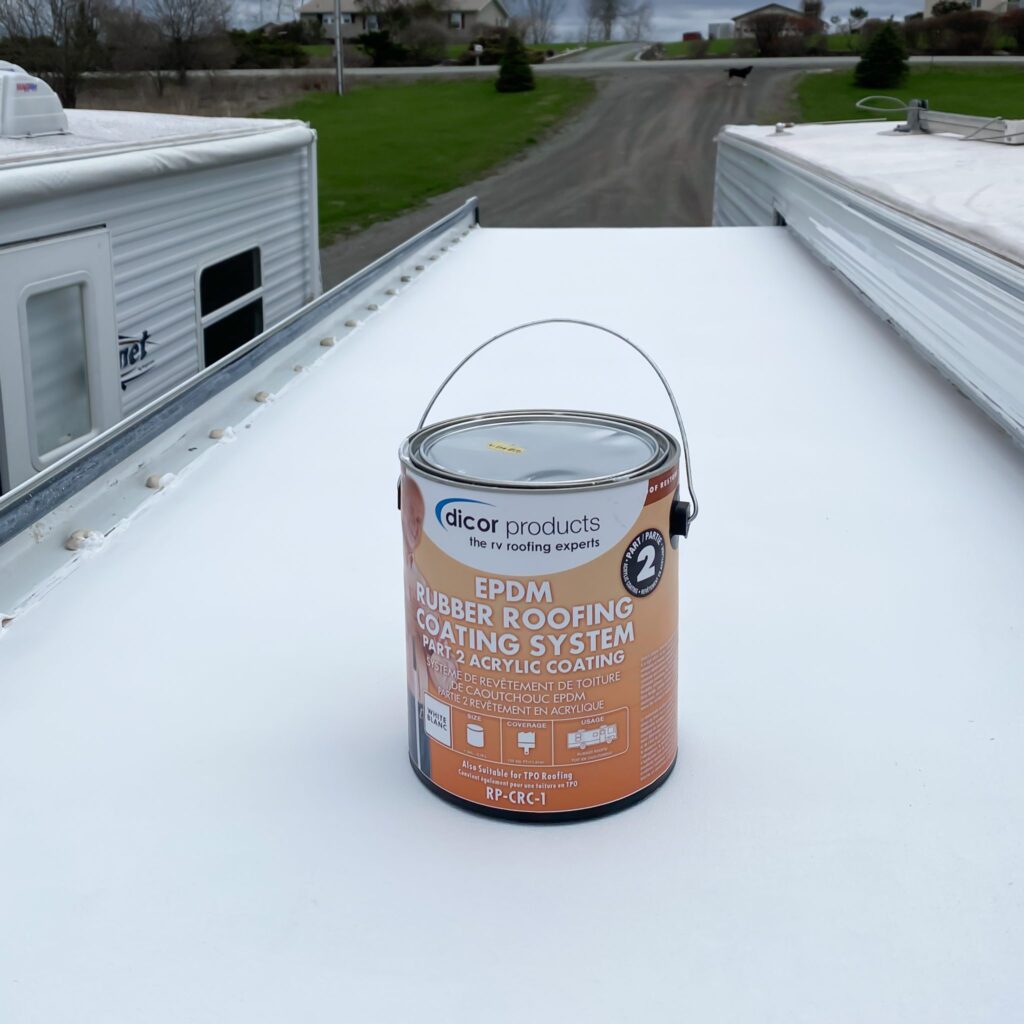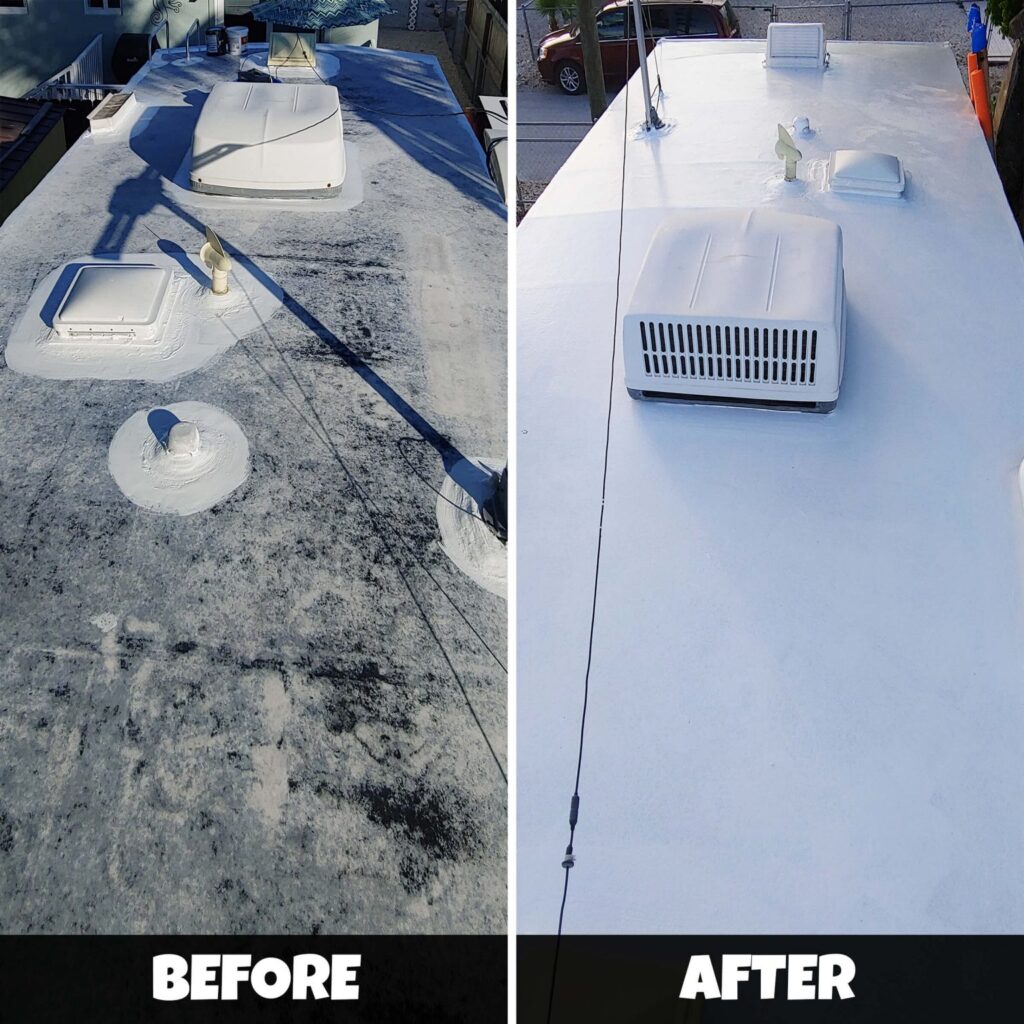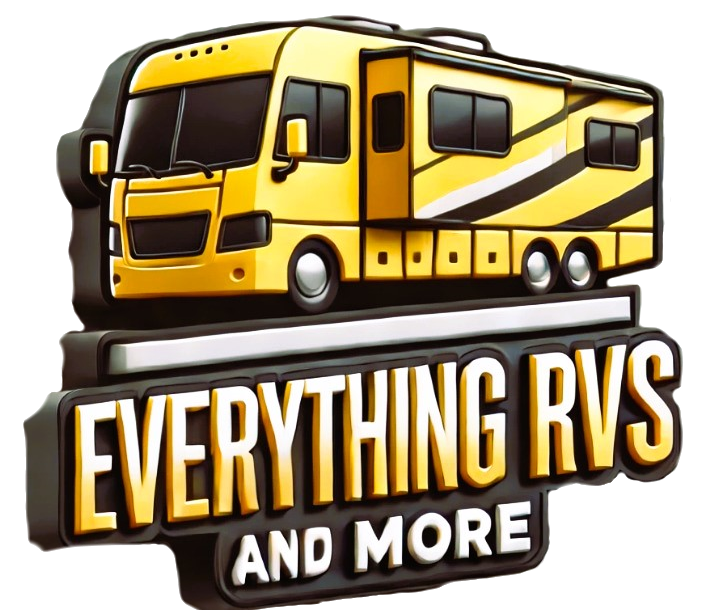Affiliate Disclosure: I earn commissions if you shop through the links below at no additional cost to you.
Last Updated on February 13, 2025 by Jeremy
Introduction: Tackling RV Roof Leaks the Right Way
Every seasoned RVer knows the nightmare of a leaky roof. It starts with a small drip, then suddenly—your cozy mobile home becomes a moisture-laden disaster. Water damage can warp wood, destroy insulation, and even compromise the structural integrity of your rig.
I recently climbed onto my own RV roof for an inspection, and it reminded me just how critical it is to stay ahead of leaks. If you’re dealing with cracks, seams that won’t hold, or aging roof coatings, the right repair product makes all the difference.
So, which one should you choose? In this updated 2025 guide, we’ll go over the top RV roof repair products, breaking down which ones work best for quick fixes, long-term solutions, and full roof resealing.
Let’s dive in.
The Best RV Roof Repair Products in 2025

Here’s how they stack up this year:
- Best Overall & Industry Standard: Dicor Products – The go-to brand trusted by RVers for long-term reliability.
- Best for DIYers & Full Roof Protection: Liquid Rubber – A complete system for resealing and waterproofing.
- Best for Budget & Simplicity: Rust-Oleum RV Roof Repair – A three-step system that’s easy to use.
- Best for Quick Fixes: Flex Seal – A temporary solution to get you through emergencies.
Let’s break each of these down in detail.
1. Best Overall & Industry Standard: Dicor Products
Overview
Ask any experienced RVer about roof maintenance, and they’ll likely say one name: Dicor. This brand has been a staple in the RV industry for decades, providing reliable and long-lasting solutions for EPDM and TPO roofing.
Unlike quick-fix solutions, Dicor products are engineered for professional-grade sealing, ensuring your RV roof stays protected for years, not just months.
Product Lineup & Application System
Dicor follows a three-step system designed for maximum durability:
1️⃣ Butyl Tape – Seals seams, vents, and roof openings before applying coatings.
2️⃣ EPDM Rubber Primer – Prepares the surface for optimal adhesion.
3️⃣ Dicor EPDM Rubber Roof Coating – A thick, flexible coating that expands and contracts with your roof.
Pros:
✔ Trusted industry standard—most RV manufacturers recommend Dicor.
✔ Designed specifically for RVs, ensuring compatibility.
✔ Flexible & long-lasting, with UV resistance and weatherproofing.
Best Use Case:
Perfect for RVers looking for a tried-and-true, industry-standard roof sealing solution.
2. Best for DIYers & Full Roof Protection: Liquid Rubber
Overview
If you’re tackling a full RV roof reseal, Liquid Rubber is one of the best DIY-friendly solutions. Unlike traditional sealants, this product creates a thick, waterproof rubber membrane that bonds directly to your RV’s roof, sealing leaks before they even start.
While Dicor is great for targeted repairs, Liquid Rubber is a go-to for full-scale roof protection.
Product Lineup & Application Process
1️⃣ RV Roof Smart Cleaner – Cleans the surface for better adhesion.
2️⃣ Seam Tape – Reinforces seams and weak spots.
3️⃣ RV Roof & EPDM Primer – Prepares the surface.
4️⃣ Liquid Rubber RV Roof Coating – Creates a fully waterproof rubber layer.
Pros:
✔ Ideal for full roof resealing—creates a seamless, watertight barrier.
✔ UV-resistant and flexible, preventing cracks over time.
✔ No primers needed for most surfaces, making DIY application easy.
Best Use Case:
Best for RV owners who want to completely reseal their roof and create a long-term waterproof barrier.
📌 Note: While I no longer have a direct affiliate partnership with Liquid Rubber, their products can still be found on Amazon and RV supply stores.
3. Best for Budget & Simplicity: Rust-Oleum RV Roof Repair
Overview
Rust-Oleum has been around since 1921, and its RV roof repair line is an affordable yet reliable solution for sealing leaks. While it doesn’t offer the same long-term strength as Dicor or Liquid Rubber, it’s a solid option for budget-conscious RVers.
Product Lineup & 3-Step Process
1️⃣ Self-Adhering Roof Tape – Peel-and-stick tape for sealing cracks, seams, and vents.
2️⃣ Flexible Sealant Spray – A rubberized coating that locks out moisture.
3️⃣ 100% Silicone Roof Coating – A UV-resistant final layer for durability and energy efficiency.
Pros:
✔ Affordable and easy to use.
✔ Three-step process is beginner-friendly.
✔ Works well on different roof materials.
Best Use Case:
Best for RVers looking for an easy, budget-friendly solution for sealing small leaks.
4. Best for Quick Fixes: Flex Seal
Overview
If you need a temporary solution to stop water from entering your RV, Flex Seal is the best option. This isn’t a long-term fix, but it’s great in emergencies—especially if you’re on the road and can’t do a full repair right away.
Product Lineup
- Flex Paste – Thick rubberized paste for patching small holes.
- Flex Tape – Ultra-strong waterproof tape for cracks and seams.
- Flex Seal Spray – Spray-on rubber sealant for temporary waterproofing.
Pros:
✔ Quick and easy to use.
✔ Works well for temporary fixes on the go.
✔ Can be applied without tools.
Best Use Case:
Perfect for emergency leak repairs when you need a quick, temporary fix.
Where to Buy These RV Roof Repair Products

You can find all of these products at:
- Amazon – Large selection, often with customer reviews.
- Home Depot – Stocks Rust-Oleum & Liquid Rubber.
- Walmart – Carries Flex Seal & general RV supplies.
- Camping World / RV Parts Country – Best for Dicor & RV-specific sealants.
- Local RV Dealerships – Some dealerships sell specialized roof repair products.
📌 Pro Tip: Always check product reviews and compare prices before buying!
Final Thoughts: Choosing the Right RV Roof Repair Product
✅ Need an industry-standard product? → Dicor is the gold standard.
✅ Resealing your entire roof? → Liquid Rubber provides full protection.
✅ Looking for a budget-friendly fix? → Rust-Oleum is an affordable option.
✅ Need a fast temporary fix? → Flex Seal is a quick solution.
With regular maintenance and the right products, your RV roof will stay sealed and protected, keeping you dry no matter the season.
Which repair method has worked best for you? Drop a comment below




.jpg/:/cr=t:5.56%25,l:0%25,w:100%25,h:88.89%25/rs=w:1240,h:620,cg:true)



Leave a Reply